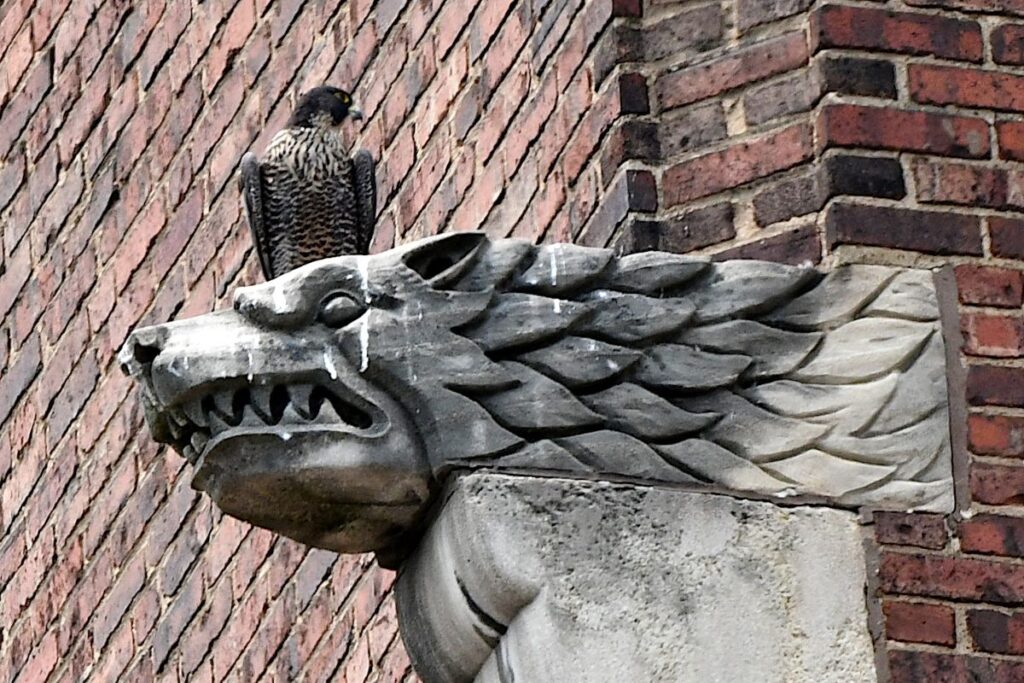
11 June 2023
This spring Downtown Pittsburgh’s peregrines were so confusing that for two months we weren’t even sure of their age and sex. By now we know that the male at Third Avenue is Terzo and the dark brown bird is female. Why is this bird so dark? The mystery is intriguing.
Wrong ID for the dark bird:
In early April Jeff Cieslak and I were both convinced the dark brown bird was a one-year-old male because we saw it enter the Third Avenue nest carrying prey even though the eggs had not hatched yet. After all, male peregrines bring prey to incubating females and immature birds have brown plumage … don’t they?
Solve the easy ID first: Who is the banded white-chested bird?
Jeff Cieslak’s April and May photos show that the gray-and-white adult has black/red bands. Also, several viewers remarked that the bird’s face is like Terzo in other photos. This bird is the male, Terzo.
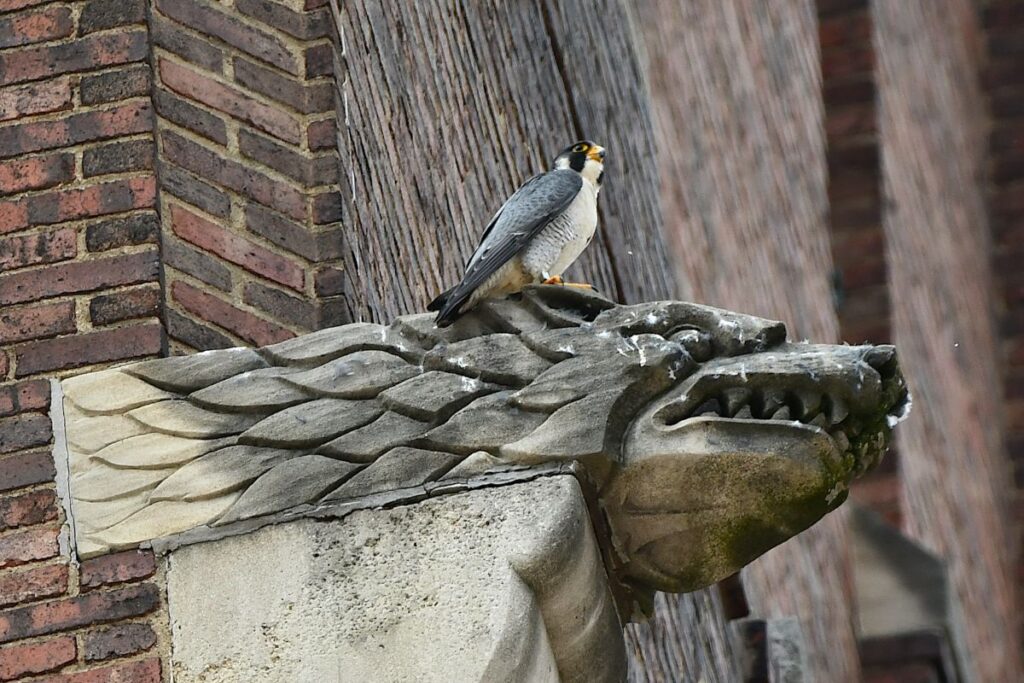
Is the dark bird immature?
No. Adult plumage has horizontal stripes on the flanks and belly, immature plumage has vertical stripes. Compare these side-by-side adult and juvenile peregrines photographed at Third Avenue.
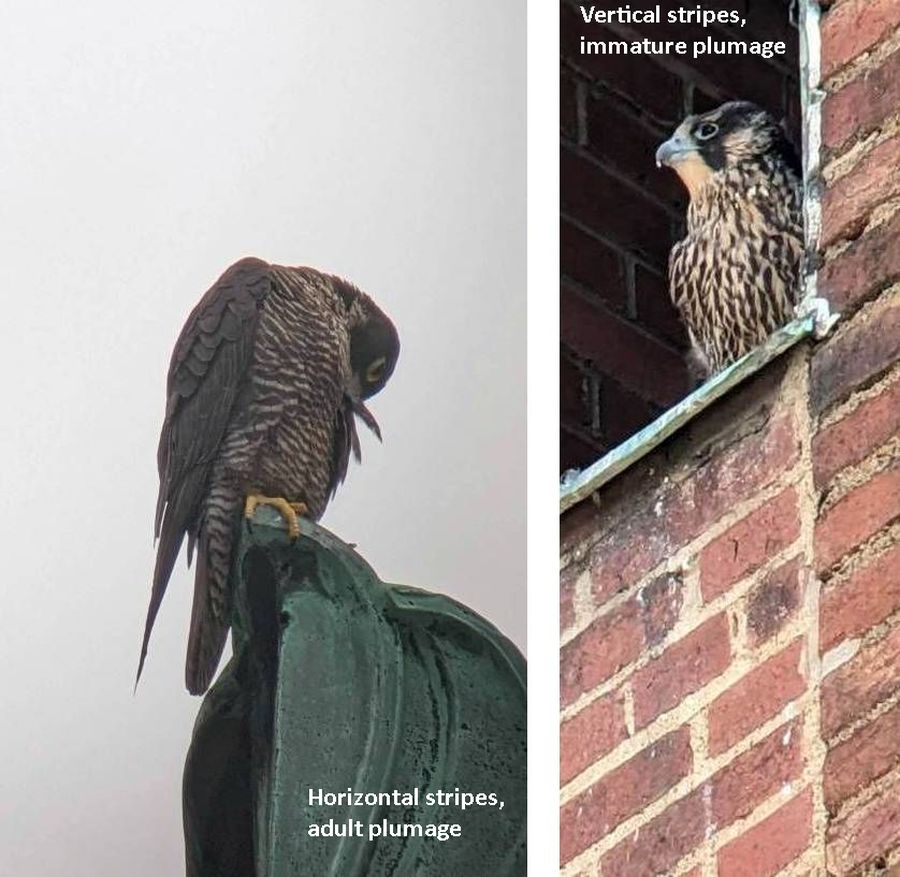
Is the female completely dark brown? No. This photo of her back shows it is grayer in color than her belly.
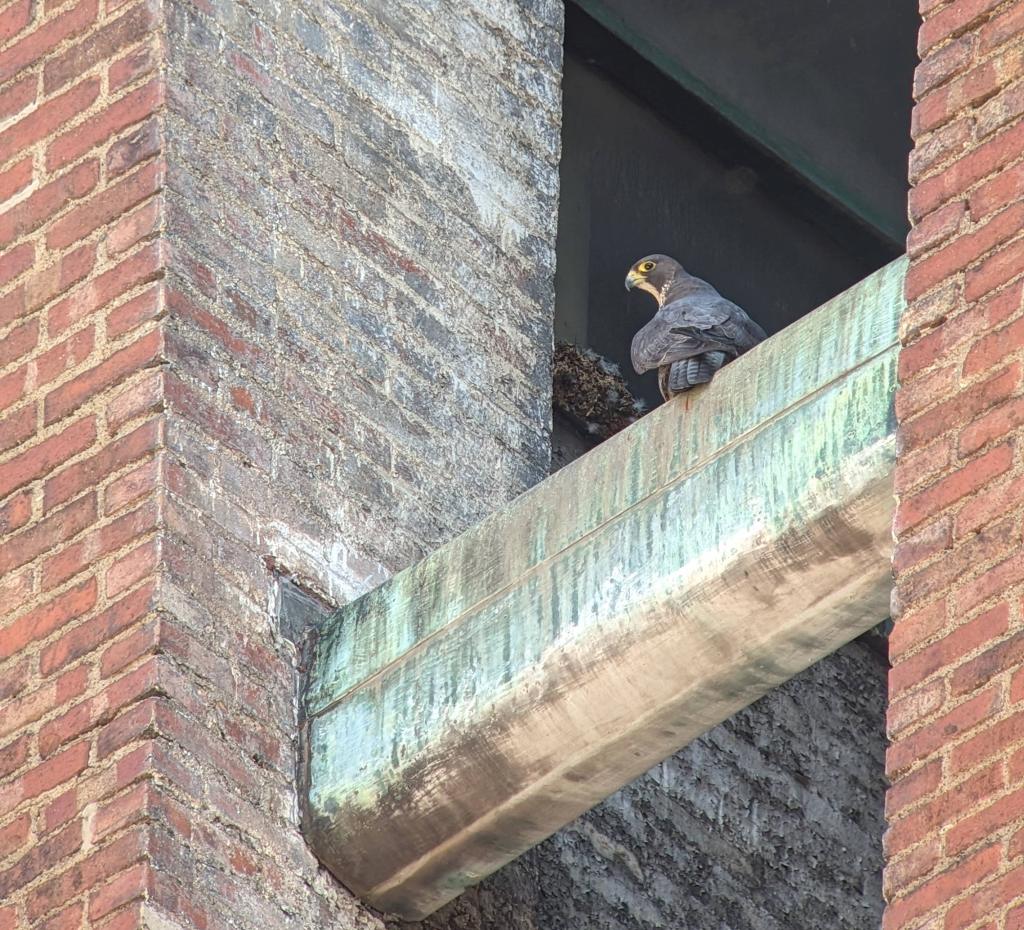
Why is this bird so dark?
I sent photos to Art McMorris, retired PA Game Commission Peregrine Coordinator, and asked: “This adult at the Third Ave nest site Downtown is very brown and not banded as far as we can see. It doesn’t have juvenile vertical stripes on flanks and chest. I don’t know what to make of this coloration.”
Art’s reply includes a Peregrine Reintroduction discussion in the third paragraph:
This is indeed a very puzzling-looking bird. I’m looking at these 3 photos and the photo Jeff Cieslak took on 4/14. All show the horizontal banding typical of adult peregrines, not juveniles. But it is very brown, atypical of adults. It is much grayer in the third photo you sent; nowhere near as brown but still very dark.
Structurally, it looks like a typical peregrine to me.
Taking all of this together, I’d say it is reminiscent of pealei [Pacific Northwest subspecies]. Pealei is non-migratory, so I wouldn’t suggest that it might be a bird from the Pacific Northwest, but pealei is also one of the 7 subspecies used for captive breeding and release. And occasionally genetic recombination in the wild population results in birds with unusual coloration. I know of 2 cases of peregrines that looked exactly like pure tundrius, but their parents had the typical appearance of the re-introduced population, which strongly resembles eastern anatum (but is not anatum; it’s an intergrade of the 7 subspecies). One of those tundrius look-alikes was from the Gulf Tower, quite a few years ago when the population was still small.
So, my best guess is that this bird is an adult peregrine in which recombination has resulted in homozygosity of some alleles from its pealei ancestors. And the downtown bird is fertile, inconsistent with it being any kind of hybrid.
It will be interesting to see what this year’s young look like when they molt into adult plumage. But unfortunately, we’ll never know.
— Paraphrased email from Art McMorris, 4 June 2023
What other clues do we have about this bird?
Art has so much experience with peregrines that he also said: “Earlier the brown bird was called the male, but the feet look female to me.”
Yo! Big feet?!
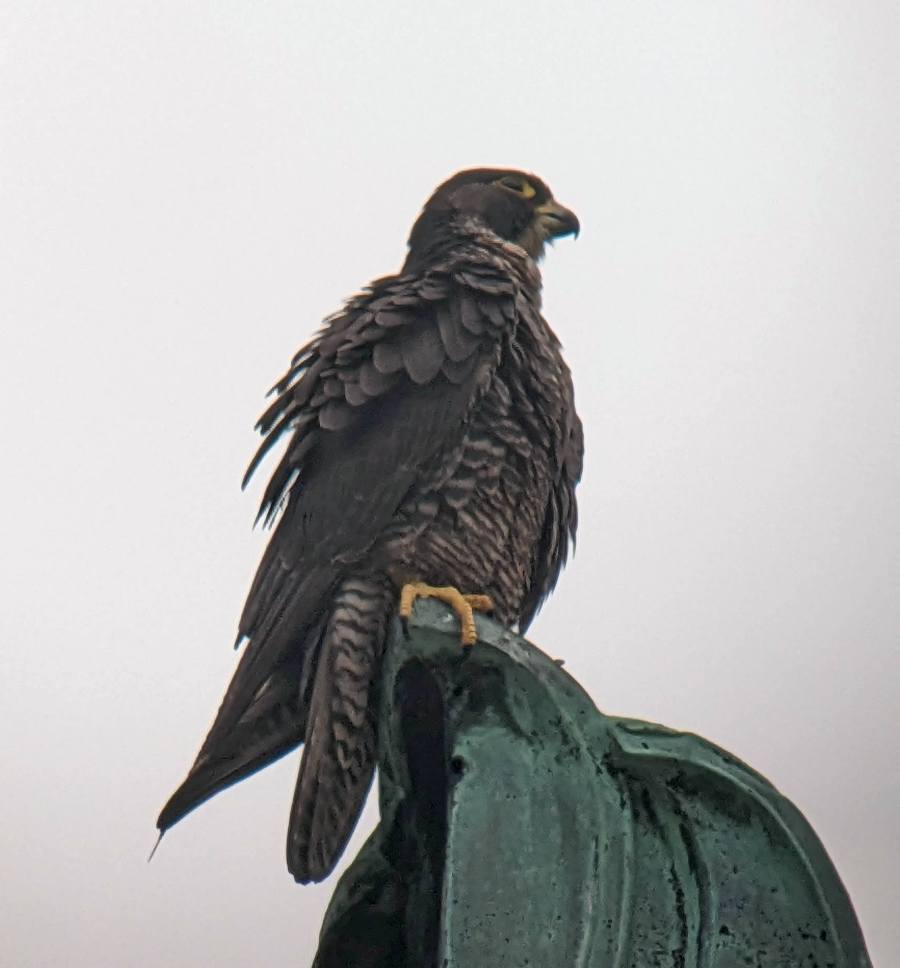
Just when I think I’ve got it all figured out, peregrines surprise me again.
(photos by Jeff Cieslak and Kate St. John)
What a fascinating read, I too have learned something surprising. And I’m glad Terzo is still the resident male. Thank you Kate.
Very interesting! Thanks Kate!
So very interesting, and I too am glad that Terzo is still there! Thanks, Kate!
It could have some Peale’s genes in there. I got to see one in Southern California.
https://flic.kr/p/24a5xEB
Oh my goodness, what a mystery. Thanks to you and Art for investigating. Like the other posters, I’m happy to read that Terzo is the resident male.
Good morning, so happy to see Terzo is still the resident male. Kate, will you name this new female?
Janet, She has already made a name for herself. She’s The Dark Bird.
Thanks for the follow up. Art’s explanation is interesting. When I initially saw the photo I thought the bird looked like one of the Pacific Northwest or western subspecies (I could not recall the distribution of these dark races).
On a separate subject, it’s nice to finally have rain!
I’m surprised that they stayed at the 3rd Avenue site-since Dori has obviously been replaced and she seemed to prefer the lower nest location. Is there still a nesting box on the Gulf Tower?
There might be a nestbox on the Gulf Tower but the site has not been of interest to the peregrines for 6 years. Two years ago, 2021, there was a fire whose smoke came out through the roof and condemned the building for months. See https://www.youtube.com/watch?v=WGmw8au4AxQ&ab_channel=CBSPittsburgh
Kate–some good peregrine news from Morgantown…….
https://www.yahoo.com/lifestyle/historic-release-return-peregrine-falcons-040100500.html